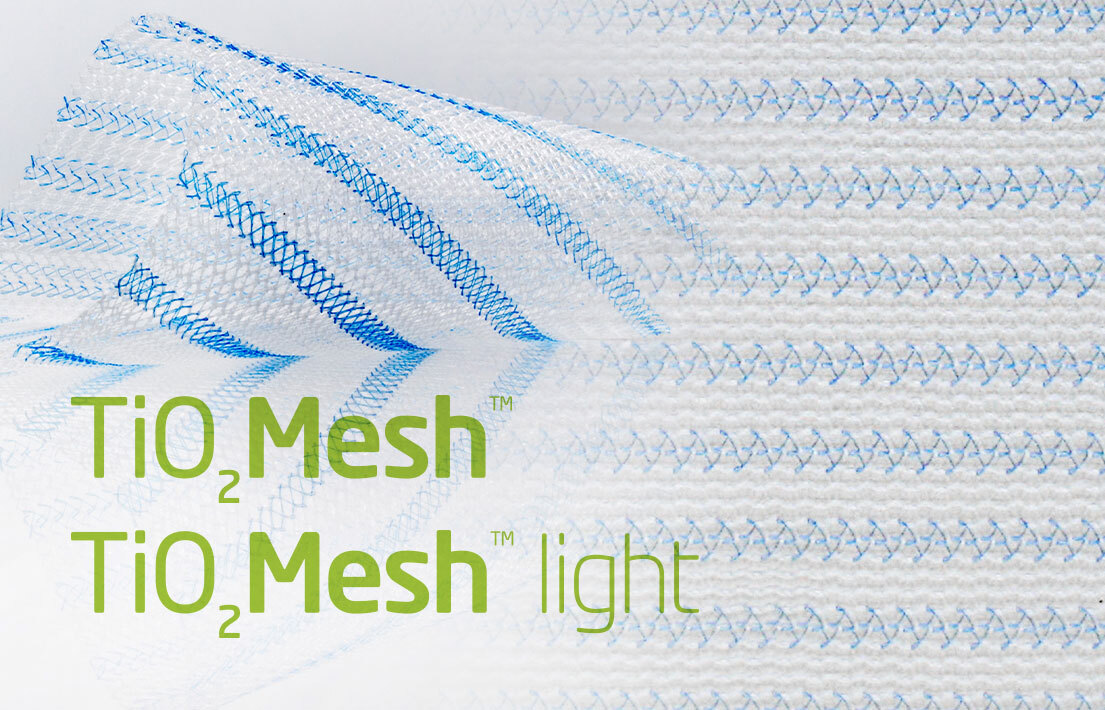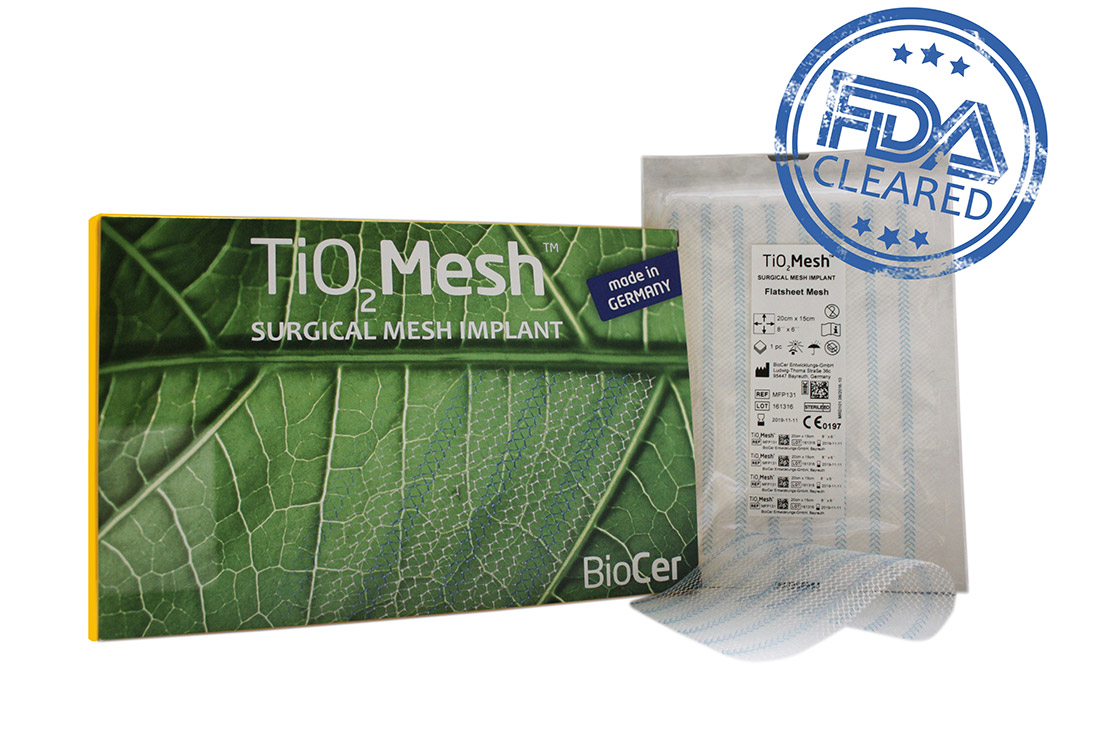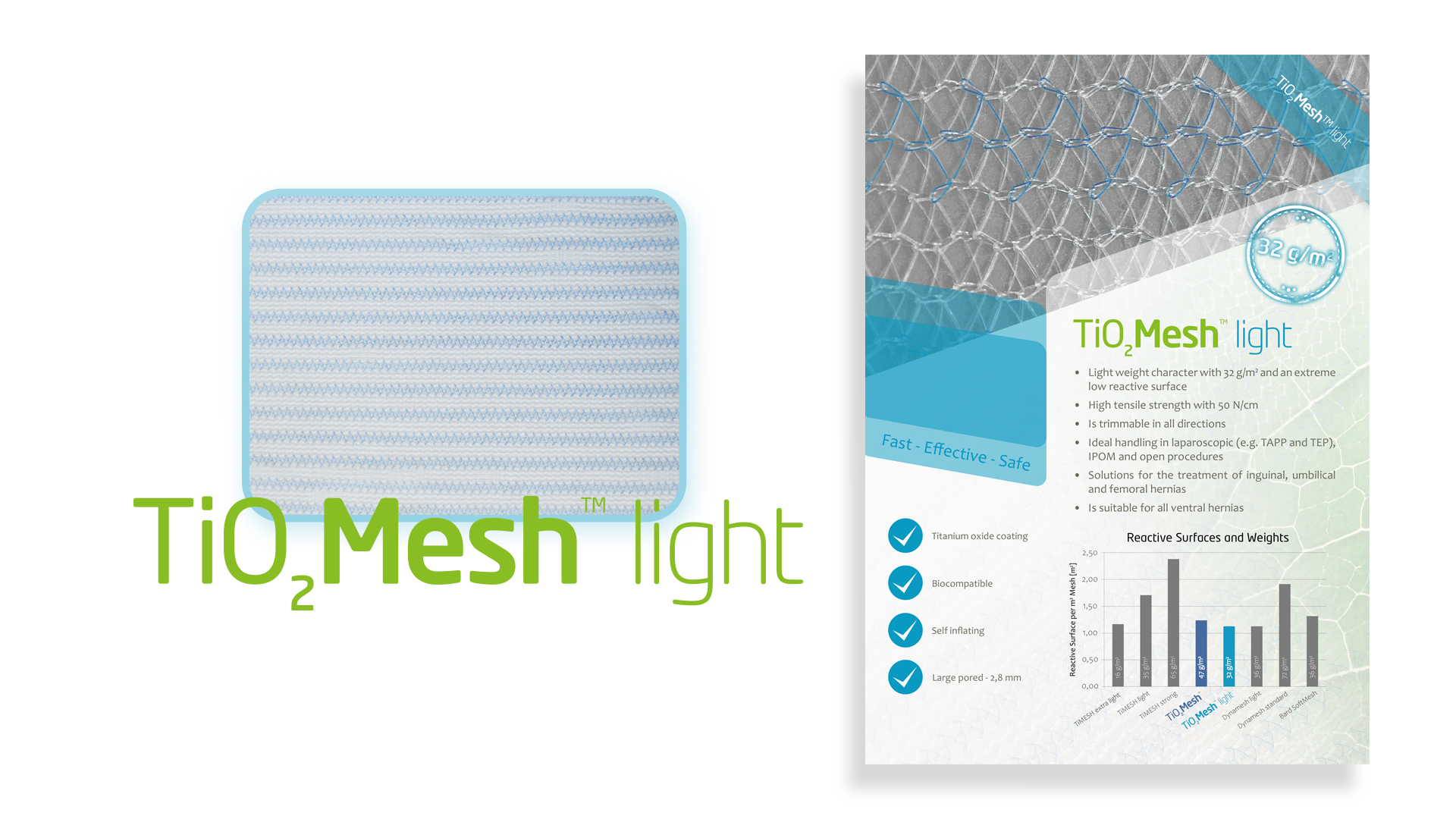TiO2Mesh™ – Innovative hernia repair
TiO2Mesh™ is made from a monofilament polypropylene thread and has a large-pored structure with blue orientation stripes. The single fibers of the mesh implants are completely covered by a high-purity and adherent titanium oxide surface coating to enhance the biocompatibility. In combination with the lightweight character, the large-pored structure and the reduced material surface lead to improved fibroblastic ingrowth and reduced shrinkage. Studies with titanium oxide coated implants compared to uncoated materials demonstrated a significant increase in cell viability and cell adhesion by the biocompatible coating.
The biocompatible coating furthermore generates a hydrophilic implant surface. Together with the blue orientation stripes, the intraoperative handling and placement of TiO2Mesh™ is significantly supported. TiO2Mesh™ is provided to the user in various sizes and shapes. In addition to the standard measurements, tailor made mesh implants for specific indications of modern hernia surgery are available on request.
The advantages at a glance
The new generation of surgical mesh:
- Completely covered by a 100 % pure titanium oxide layer
- Light weight mesh with reduced material surface for all treatments
- Versatile indication specific sizes and designs adapted to the surgeons needs
- Large pored mesh structure (2,8 mm) with 47 g/m² and light with 32 g/m²
- Optimized pore structure for highest flexibility
- Self inflating for fast and effective laparoscopic handling
- Fast and effective mesh placement supports the clinical time management
- Blue orientation stripes for improved laparoscopic handling and positioning
You are currently viewing a placeholder content from Youtube. To access the actual content, click the button below. Please note that doing so will share data with third-party providers.
More InformationTiO₂Mesh™ and TiO₂Mesh™ light – Indication
For each indication the appropriate mesh implant TiO2Mesh™ can be used for all common open and laparoscopic techniques of inguinal or incisional hernia repair, e.g.:
- for Lichtenstein technique
- for transabdominal preperitoneal herniaplastic (TAPP)
- for total extraperitoneal herniaplastic (TEP)
- for all modern procedures of ventral hernia treatment (IPOM, Sublay, Onlay, Milos and e-Milos)
- for hiatal hernias (Nissen- or Toupet-Fundoplicatio)
Due to the high tensile strength of 55 N/cm (50 N/cm light) TiO2Mesh™ can be used for inguinal hernia and incisional hernia. Particularly in laparoscopic procedures, TiO2Mesh™ differs significantly from previous applications of mesh implants due to the improved handling properties.
The hydrophilic material surface of TiO2Mesh™ and the large-pored mesh structure lead to a self-adhesive effect, so that the need of fixations is widely reduced in different applications (TEP).
Ease of use
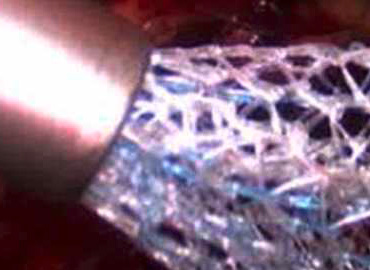
Self inflating
Self inflating for fast and effective laparoscopic handling.
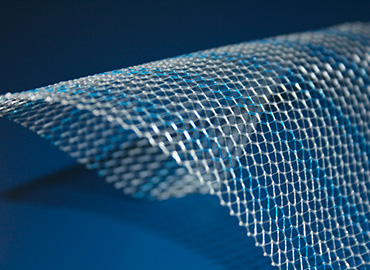
Orientiation stripes
Blue orientation stripes facilitates the intraoperativ positioning.
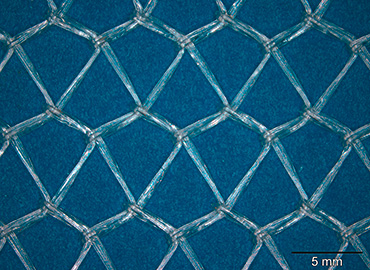
Large pores
Large pored structure supports visibility and transparency.
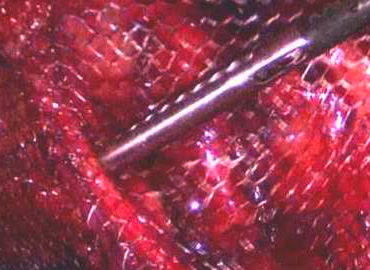
Self-fixating
Hydrophilic implant surface supports intraoperative handling.
Product range
Would you like to discover more surgical mesh products?
Download area
In our download area you will find brochures for our surgical mesh products.

